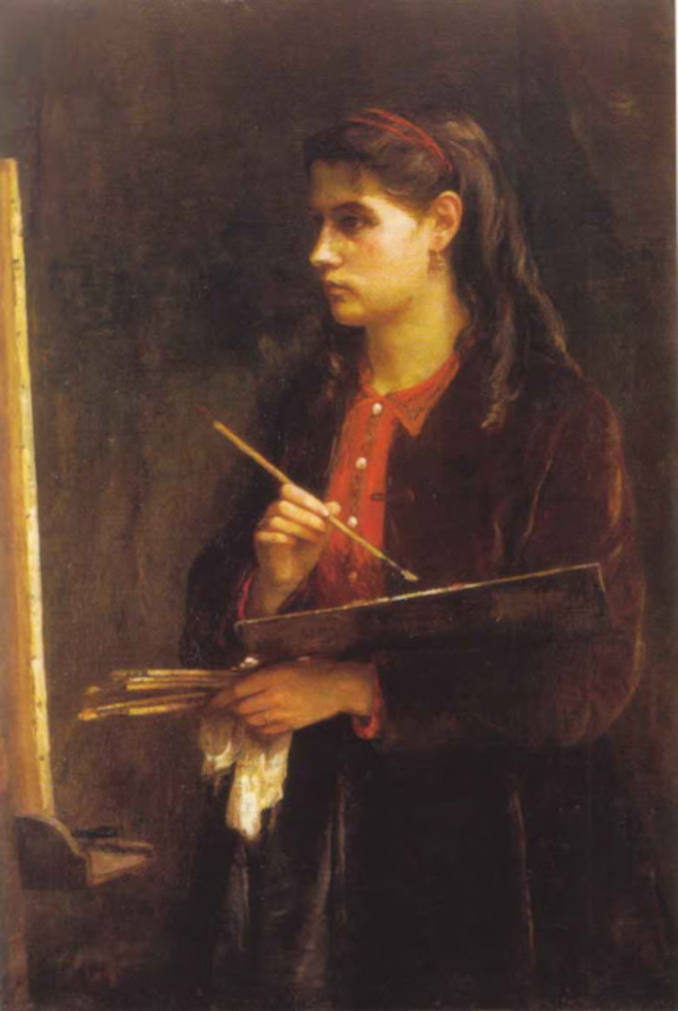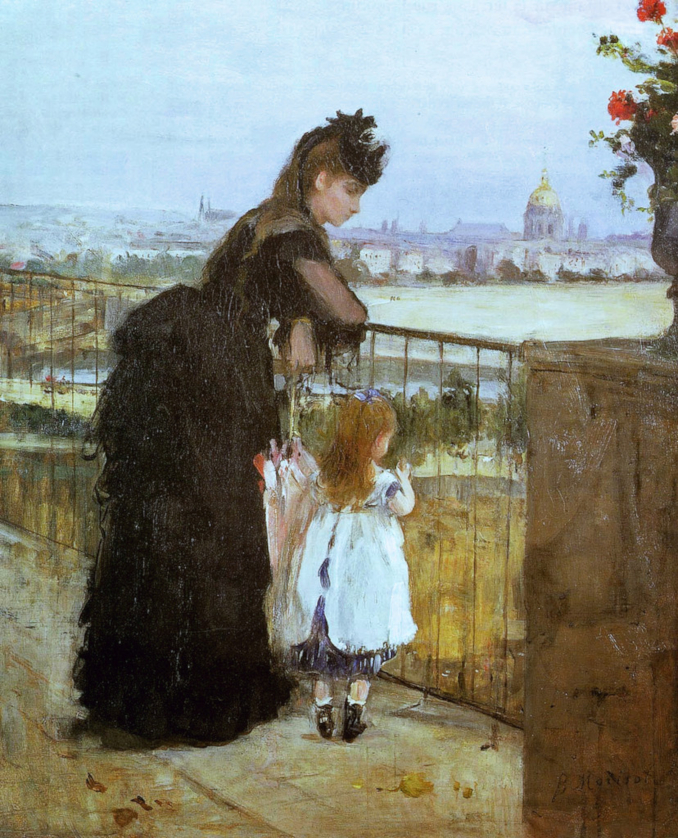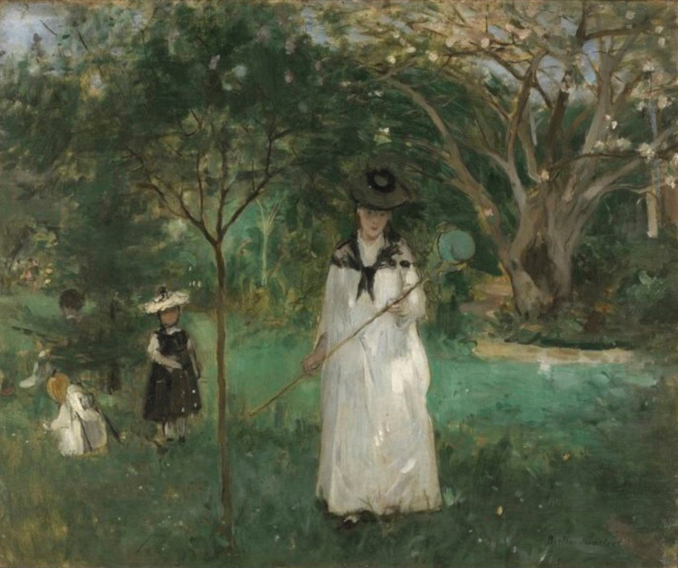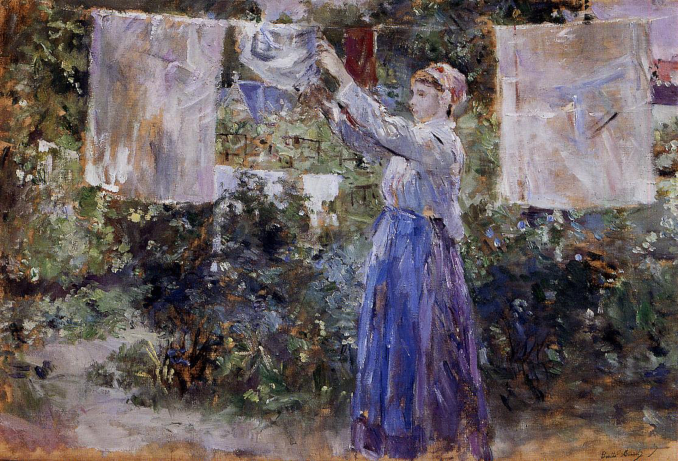Food for the Soul: Berthe Morisot – Women Painters Series 1

Portrait of Berthe Morisot by her sister Edma Morisot. 1865. Photo credit: Wikimedia commons.
“I do not think any man would ever treat a woman as his equal, and it is all I ask because I know my worth.” Berthe Morisot in her notebook
By Nina Heyn- Your Culture Scout
As much or as little that the #MeToo movement has achieved in the improvement of women’s lives in the world of male-dominated professions, there is indeed now a larger interest in art museum exhibitions that focus on woman artists. There have been recent retrospectives of Cindy Sherman at Broad Museum in Los Angeles, and there is a one currently going on in Paris. Also in Paris, the Musée d’Orsay is celebrating another female artist who lived in times even less tolerant of women who wanted to be treated equally seriously as men. Berthe Morisot lived in the 19th century, when well-bred young ladies were expected to sing, play music and dabble at watercolors but no one expected them to actually exhibit at professional competitions. Berthe had other ideas.

Berthe Morisot. Woman and Child on a Balcony. 1872. Photo credit: Wikimedia Commons
It’s not that she was not appreciated. Her parents supported both her art studies and her financial needs (she did not marry until thirty three – an extremely advanced marrying age in those days), and Berthe herself was often praised and encouraged by her artistic friends. Her artistic anguish was more about the fact that she was not appreciated enough – not treated as an equally ‘serious’ artist as all her male colleagues. In fact, when she started submitting her painting to the Salon – an ultimate platform to be judged as an artist – she was initially dissuaded by her own circle of artists and critics, including Edouard Manet, her friend, her mentor, a celebrated painter and her future brother-in-law.
Exhibitions like this one at Orsay seek to restore this balance of recognition, albeit over a hundred years too late for Berthe herself but certainly in time for us to see the bulk of her artistic output. Moreover, since this exhibition is a joint effort of several museums in Canada, the US and France as well as sourced from private collections, the displays could be comprehensively arranged by all themes and periods in Morisot’s life.
Berthe, together with very talented sister Edma, was already placed inside an affluent and artistic milieu when the sisters started in 1860 their serious art studies with no less than Camille Corot, a leading proponent of realistic painting. Four years later Berthe started exhibiting at the annual exhibitions of the Salon. Edma’s portrait of Berthe is a sufficient proof of her talent but Edma eventually was met with a fate of so many talented women of the era: as soon as she got married and had children, her painting stopped.
While Berthe was praised, somewhat condescendingly: “The entry into competition of a young girl from a distinguished background is both a salutary example and a singular encouragement,” her ambition to be an independent and innovative artist has led her away from the academic style to become a cofounder of the Impressionist circle, together with Monet, Pissarro, Cézanne and Sisley. She exhibited with them at the first, famous 1874 exhibition (the one that gave name to the movement as “Impressionism”) and she has participated in seven others.
Both Morisot’s contemporary artist friends and subsequent art historians and critics have paid much attention to her use of color and her own “poetic” style. Critic Philip Burty wrote:”Here is a delicate colorist who succeeds in making everything cohere into an overall harmony of shades of white which is difficult to orchestrate without lapsing into sentimentality.”

Berthe Morisot. La Chasse aux papillons. 1874. Photo credit: Wikimedia Commons
The Orsay exhibition gives us an insight into all that – the amazing subtlety of shades, a truly Impressionist way to show movement of grass or leaves, an interplay of light and shadow captured at different times in the same open-air location. However, this is not what makes Morisot stand apart. They say that in art the most important thing is not it the subject matter but the way something is presented. In case of Morisot, this is not entirely true. What is important is precisely what she shows. She was a quiet observer of the lives of women and children around her, in situations that would not have men present and observing. At the first Impressionist exhibition in 1874 she exhibited an exquisite painting called Hide and Seek (Cache-cache, 1873) where she captured a mother playing with her little daughter around a small tree. The mother, dressed in a hat, jacket and with an umbrella cannot really hide behind a few leaves but this does not matter to the little one- it’s the game of pretend that they both enjoy. Another, a better-known Morisot picture is called Chasing Butterflies (La Chasse aux papillons, 1874), has a mother and two tots wandering in a garden with a little butterfly net. Again – it is a fleeting moment of a pretend game with little kids – something that so many mothers would have done over millennia and something that most fathers would miss happening.
One of the most beautiful and insightful paintings at the exhibition is called Woman and Child on a Balcony – the model is again Edma with a little girl. This not a posed portrait- they are looking out at Parisian Champs de Mars, observing something below them. The little girl’s left foot is standing a bit crooked- the way kids tend to fidget a little. Berthe would spend hours looking at her nieces and then her own daughter and she knew how they kids really look and behave.
Morisot painted her daughter’s nanny and other servants – not as allegorical figures, not as metaphors of life’s hardship, not even as just studies of color or light. They are just women at work – picking fruit, doing dishes in the kitchen. These are very feminine insights. Morisot’s colleagues tackled sunsets and cathedrals, ballet dancers and card players, but they did not really spend too much time noticing women who did dishes or tended to kids.

Berthe Morisot Blanchisseuse. 1881 Photo credit: Wikimedia commons
Impressionists fight with academicians is long gone. Their canvases are now world famous for their use of light, color and capturing life scenes. What is still left from that period to be recognized a bit more is the art of someone like Berthe Morisot. A woman who had as much technical talent as men but had a different way of looking at her subjects precisely because she lived in a world closed to men – that of motherhood, running a household, providing childcare.
This exhibition is a joint effort of Musée National des Beaux-Arts du Québec, Barnes Foundation in Philadelphia, the Dallas Museum of Art in Dallas, and Musée d’Orsay and L’Orangerie in Paris.

